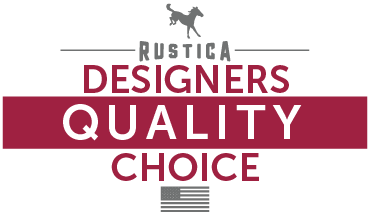1.800.891.8312
800-891-8312
FREE SHIPPING*
Free Shipping Details
Most orders over $500 qualify. Free shipping applies to Barn Door Hardware, Barn Doors, and Pocket Doors over $500.
Note: Front doors, interior doors, shower doors, any oversized door (wider than 3ft and taller than 7ft) and any special order doors have shipping costs calculated at checkout. Some barn door hardware track lengths do not qualify for free shipping.
Barn Doors
Barn Door Hardware
Shop By Function
Standard Barn Door Hardware Double Door Barn Door Hardware Bypass Barn Door Hardware Bifold Barn Door HardwareShop Special Application
Heavy Duty Barn Door Hardware Low Clearance Barn Door Hardware Outdoor Rated Barn Door Hardware No Show Barn Door HardwareShop Handles, Locks and Accessories
Barn Door Pulls & Handles Barn Door Locks Barn Door Hardware System Parts Barn Door Hangers Only Same Day Ship Barn Door Hardware Cabinet Barn Door Hardware Aluminum Barn Door Hardware Big Wheel Barn Door HardwareShop Other Barn Door Hardware Tracks
Smart Set J-Track Box Style Barn Door Hardware Tube Track Barn Door Hardware Ceiling Mounted Barn Door HardwareInterior Doors
Exterior Doors
Shop By Function
Single Exterior Doors Double Exterior Doors Exterior Dutch Doors Exterior Double Dutch Doors Exterior Pivot Doors Exterior French Doors Exterior Doors w/ Sidelights & Transom Window Exterior Slab Doors Exterior Doors with Pet Door Exterior Arched DoorsShop Handles, Locks and Accessories
Exterior Sidelight Windows Exterior Metal Front Doors Exterior Wood Front DoorsFront Doors & Custom Exterior Doors


The right front door will increase your home's beauty, curb appeal, security, and value. Give your home the entrance it deserves with our curated collection of front entry doors. Custom made from thousands of selections by our expert craftsmen, each front door will introduce your home with elegance and artistry.




Hang in there! Loading the best brands and products to your fingertips.
Front Doors - How to Choose the Perfect Front Door for Your Home
Your front entry door helps visitors form a first impression of your home. It’s no surprise that the front door is often referred to as the portal to the “soul” of your home. Choosing the right door can help your home truly represent you and your unique style.How to Choose the Perfect Front Door for Your Home:
- Choose the Door Function
- Decide on a Hanging Option
- Measure for Door Width
- Select the Glass Style
- Pick a Paint Color and Finish
- Choose Your Hinge Finish
- Decide If You Want a Sidelight
- Select Your Deadbolt and Door Handle
- Plan for Installation
What Is an Entry Door?
Your entry door is one of the first things a guest sees when they come to visit. With so many different combinations of styles and materials, you can easily personalize your entrance with an exterior door that suits both you and the architectural style of your home—taking your home from drab to fab in a simple weekend.How to Choose the Perfect Front Entry Door for Your Home
Look for an entry door that speaks to your style and gives a great first impression of your home and your family. Your home deserves more than a generic door hanging on the discount rack at your local home improvement store. Follow these steps to choose one of the beautiful custom doors from Rustica:1. Choose the Door Function
The type of exterior door that you need largely depends on the function of the door. Entry doors, while commonly referring to front doors, often include patio doors, storm doors, garage doors, and sliding doors. It’s important to first define the door’s function. For simplicity, we’ll focus on front doors since they have the biggest impact on your home.What is the best material for a front entry door?
The best material for the door depends on its function. For most front doors, you want to select a material that is resistant to sun, wind, and rain, while also providing a level of security. While many doors are made of metal and fiberglass, most custom home builders and DIY remodelers prefer genuine, high-quality wood grain.What are the best front entry doors for security?
If security is a primary concern, steel entry doors are common as they tend to be more secure than other options available in the market.2. Decide on A Hanging Option
The next step in choosing the perfect door is to decide whether you will get a slab door or a pre-framed or pre-hung door. A slab door is a good option if your door frame is in good condition and you aren’t adding any elements like sidelites. A prehung door should be considered if the existing frame is rotting or damaged.3. Measure for Door Width
When selecting your replacement entry door, you need to decide whether you are going to use your existing frame size, or if you are going to add in sidelights. If you want to avoid reframing, be sure to measure the door width. Typically, you just need to measure the width of a single door to make sure it fits.What Size Door is Right for Your Entry?
The right size door for your home depends on its architectural style. Evaluate your space and choose a proportional door size. If the home has a small front porch, then a smaller door without sidelights may be appropriate since they could extend beyond the width of the porch. On the other hand, if your home has a grand entrance you may want to consider going with a wide-scale visual and choose a set of double French doors.4. Select the Glass Style
While a solid door can provide more security, implementing glass panels is a great way to invite light into your home. Glass can be incorporated into the style of your door in a number of ways, including in the door directly, in the sidelights, or both.5. Pick a Paint Color/Finish
Carefully consider the paint color or finish of your entry door. If you want a natural look, you should opt for a solid wood door. Cheaper alternatives include wood veneer, giving your door the look of solid wood, whether it is wood, steel, or fiberglass-composite.6. Choose Your Hinge Finish
We all know how important it is to have the right barn door hardware and sliding door hardware for interior barn doors and pocket doors. The front door is no exception—in fact, it’s arguably the most important door of your entire home. The finish you choose can drastically change the style of your entry door. A flat black or oil rubbed bronze provides a charming rustic vibe, while a chrome, French antique, pewter, or nickel finish gives this exterior door a more modern feel.7. Decide If You Want a Sidelite
The next step is to decide if you want a sidelite, which is a narrow window beside the door. Sidelites (or sidelights) can be installed on one or both sides of the door. Think about what works for the size of your entrance and the style of your home. One of the main reasons that homeowners choose sidelights is to let natural light into the home. Keep in mind that if you do not currently have sidelites, you will likely need to enlarge the opening and reframe when installing your new front door.8. Select Your Deadbolt and Door Handle
The door handle contributes to the style of the door and provides aesthetic balance. You want your door handle and deadbolt to complement each other, as well as the hinges and the door itself. While you can always choose a traditional lever or knob, don’t be afraid to go bold and pick something that stands out. When selecting your deadbolt, consider choosing a mortise lock that is installed directly into the door, as it provides an extra bit of security to your home.9. Plan for Installation
Once you’ve decided on your entry door options, it’s time to start planning for the installation. The installation costs and time required depends on the type of door.Replacement Front Door Slab - Depending on the condition of your existing door frame, you may be able to simply replace your door with a new one that fits.
Pre-Hung Front Door Replacement - Another option is to select a door that is already attached to the frame. This would simply require you pull out the existing frame and door and replacing it with the pre-framed door.
Front Door with Reframing - Adding sidelites or installing a door that's a different size will require some construction. You’ll need to enlarge the opening and measure for a new frame. You may want to consult with a contractor for assistance.
How much does a contractor charge to install a front door?
The cost of installation will vary depending on which kind of door you select. On average, installing a front entry door costs between $100-$1500. If you choose the DIY method, you can save substantially on labor. There are many resources online that can teach you how to install a front door. However, depending on your skill set, it may be worthwhile to pay a professional to avoid any problems. A professional can minimize the headaches that can come with home improvement projects. Contractors typically charge around $70-150 per hour, but this will vary depending on your location and the complexity of the project.How long does a door installation take?
The time it takes to install an entry door depends on the type of door. Pre-hung doors and door slabs are much easier to install and can take anywhere from one to five hours. Intensive reframing projects can take up to a day or more. The installation of sidelites can take an additional 3 to 4 more hours.Front Door Materials
The material that you select for your entry door will have an impact on its durability, security, and overall appearance. The most common materials for exterior doors include wood, steel, and fiberglass-composite.Wood - A wood door is aesthetically pleasing, especially if you are going for a natural look. Rustica’s anti-warping lumber is the highest quality in the industry. When it comes to making a first impression of your home, nothing tops a genuine, high-quality wood door.
Steel - If want a highly secure door, you may want to consider steel. Steel doors can be a good option in areas with high humidity and lots of rain. However, steel doors are susceptible to rust. If you choose to paint a steel door, you may need to repaint every few years due to chipping and scratching.
Fiberglass-Composite - Fiberglass-composite doors are another option. They are secure and are unaffected by rust. However, many fiberglass doors are not as energy efficient as other materials, offering a lower level of insulation. Cold weather can cause some fiberglass doors to crack, which looks unsightly and lets in cold air.
What are the best exterior doors for cold weather?
While aesthetics is important, you want to make sure your front door is functional as well. The extreme weather that the exterior is exposed to can affect its energy efficiency. This is especially true in homes that battle cold weather in the winter. Many doors are insulated to help keep the elements out. When deciding on a door that will be affected by cold weather, you should consider the type of seals on the door.Compression Seals - Doors that are compression sealed have a flexible PVC gasket on all four sides. When the door closes, these flexible gaskets compress creating a tight seal around the door. This helps prevent drafts and keeps your warm air inside during cold weather.
Magnetic Seals - For better energy efficiency, then consider doors with magnetic seals. These seals are used primarily on steel or metal doors. However, this can make your front door look and feel like a refrigerator door.
Thermally Broken Frame -Thermally broken frames have an insulated, reinforced polyamide bar installed into the frame. It’s an effective insulation method commonly used with aluminum doors.
How Long Should a Front Entry Door Last?
When made and maintained correctly, front entry doors should last for several decades. On average, a well-cared-for door can last as long as 30 years or more.Of course, the longevity of entry doors depends on a few factors, including:
- Whether the door was appropriately sealed and rated for exterior use
- The weather patterns in your area
- The door material
- How well it's maintained
- How it was installed
How to Maintain Front Entry Doors
Maintaining your entry door is necessary to keep it looking its best and extend its life. Door maintenance differs slightly with door materials.Maintaining Steel Doors
When it comes to steel door maintenance, the type of cleaners and polishes you use is a top consideration. Usually, mild soap and warm water are all you need to clean the steel to keep it free of debris, dirt, and other pollutants. Create a regular cleaning schedule, such as once or twice a week, to wipe down your door.Then, consider waxing the door every couple of months to add an extra layer of protection against the elements. Use a clean, non-abrasive cloth to apply wax designed for your door's type of steel.
Maintaining Wood Doors
Use a non-abrasive cloth and mild soap mixed with warm water to clean the door once or twice a week. When cleaning hinges, be sure to dry them thoroughly after. Add a wood polish every month or so to add shine and a protective coat.Wood doors typically have a coating of sealant to protect the wood and make them easier to clean. When the protective sealant has worn off, you may notice that your door isn't as shiny as it once was, but the wood underneath could also become dull and brittle. This signals that it may be time to refinish and seal your door.
Winterproofing Doors
One of the most crucial steps in maintaining a door is winterproofing it. Seal doors for winter by adding new weatherstripping each year, and make sure your door sweep is keeping a tight seal to prevent air leaks from entering or exiting the home.Also, be sure to tighten the door's hinges, as changes in weather can affect the door's movement. If you haven't yet added sealant to your door this year, consider doing so to protect it from wind and moisture.
When to Replace a Front Entry Door
Maintaining or restoring a door can come in handy when some imperfections need to be fixed, but the door otherwise functions well. However, a replacement might be warranted if the door has become warped to the point that it no longer opens or shuts properly, or if it has become worn to the point that restoration would be challenging.Replacing steel or wood entry doors can also be a good idea for homeowners who are updating their home's exterior and want a door that matches the new design. Modern designs, like a French door or fiberglass entry doors, can boost curb appeal and your home's value.
You can opt for premade or custom doors from Rustica. The latter lets you customize your front entry doors to your liking, including selecting its glass type, wood finish, and other features that match your home's aesthetic.
Find the Perfect Front Door at Rustica
When it’s time to select your next front door, think carefully about what you want to accomplish and the statement you want to make. Are aesthetics or security more important? What style are you trying to achieve? The answer to these questions will be the guiding factors throughout the decision-making process.Your Rustica front door will last for several decades, so you want to make sure you pick something you love. Carefully go through these steps we’ve outlined so you can choose the right door that provides the functionality, security, and artistic statement that makes your home unique. Your entry door can be the final piece of the puzzle that completes the entire style of your home.

Rustica Shop & HQ 1060 Spring Creek PlaceSpringville Utah 84663Customer Service & Sales(800)-891-8312

Hitching Post
Event Venue
1520 N Main Street
Springville UT 84663
PRODUCTS
FEATURES
COMPANY
BUSINESS



